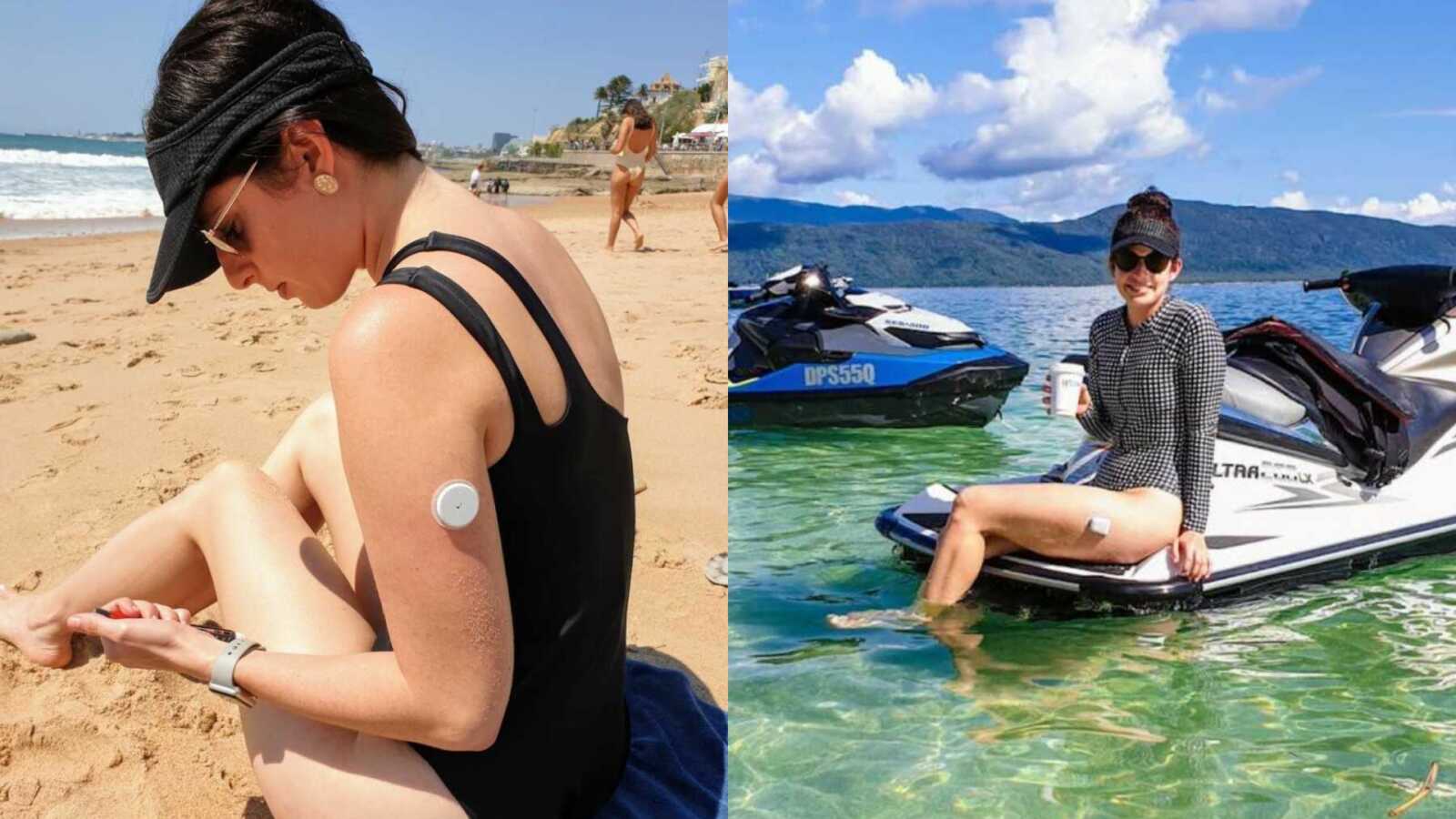Type 1 Diabetes Diagnosis
“I had 18 years of living a ‘normal’ life (if you’d like to call it that, pre-diabetes). I was/am very fortunate my family have been so supportive along the way! Having been raised in a sugar cane farming community in Far North Queensland, Australia, people thought it was quite ironic I got Type 1 Diabetes. Considering the common myth is that diabetes is caused by sugar (lies!).
I completed high school and went to study a Bachelor of Business in college. My second year of college was tough. I was studying for my mid-semester exams, and my great uncle (who was practically my grandfather) had just passed away.
Within that month, oddly enough, the showers I was having when washing my hair were becoming concerning. Over a few weeks my hair was starting to excessively block the drain. Mom is our go-to health person and she thought with all the stress I was undergoing it was most likely normal. Fast forward a few more weeks, and my thick hair was becoming quite thin. At that point we knew I needed a doctor’s appointment. Unfortunately, it wasn’t with my usual doctor, but he said I was most likely anemic and ran some blood tests.
A week later, Mom gave them a call to see if the results were in. They said yes, and that the doctor had requested a non-urgent call back, so Mom requested an appointment that Friday afternoon. September 28, 2012, Mom and I jumped in the car to go to the appointment at 3 p.m. that afternoon, feeling relieved the call back was non-urgent.
We sat down and the doctor’s first words were, ‘Your blood tests are fine.’ I felt Mom’s hand on my leg and we both took a deep breath and sighed in relief. He followed that comment with, ‘But you’ve got diabetes.’ I felt Mom’s hand instantly clench mine, and she said, ‘I’m sorry, what?’ He said, ‘Her blood glucose levels are high, which indicates she has Type 1 Diabetes.’
My heart started racing and I felt tears start to cloud my eyes, trying to hold it together, but I could soon feel them running down my face. The doctor grabbed a tissue box, slid it towards me and said, ‘Don’t worry, it’s very manageable.’
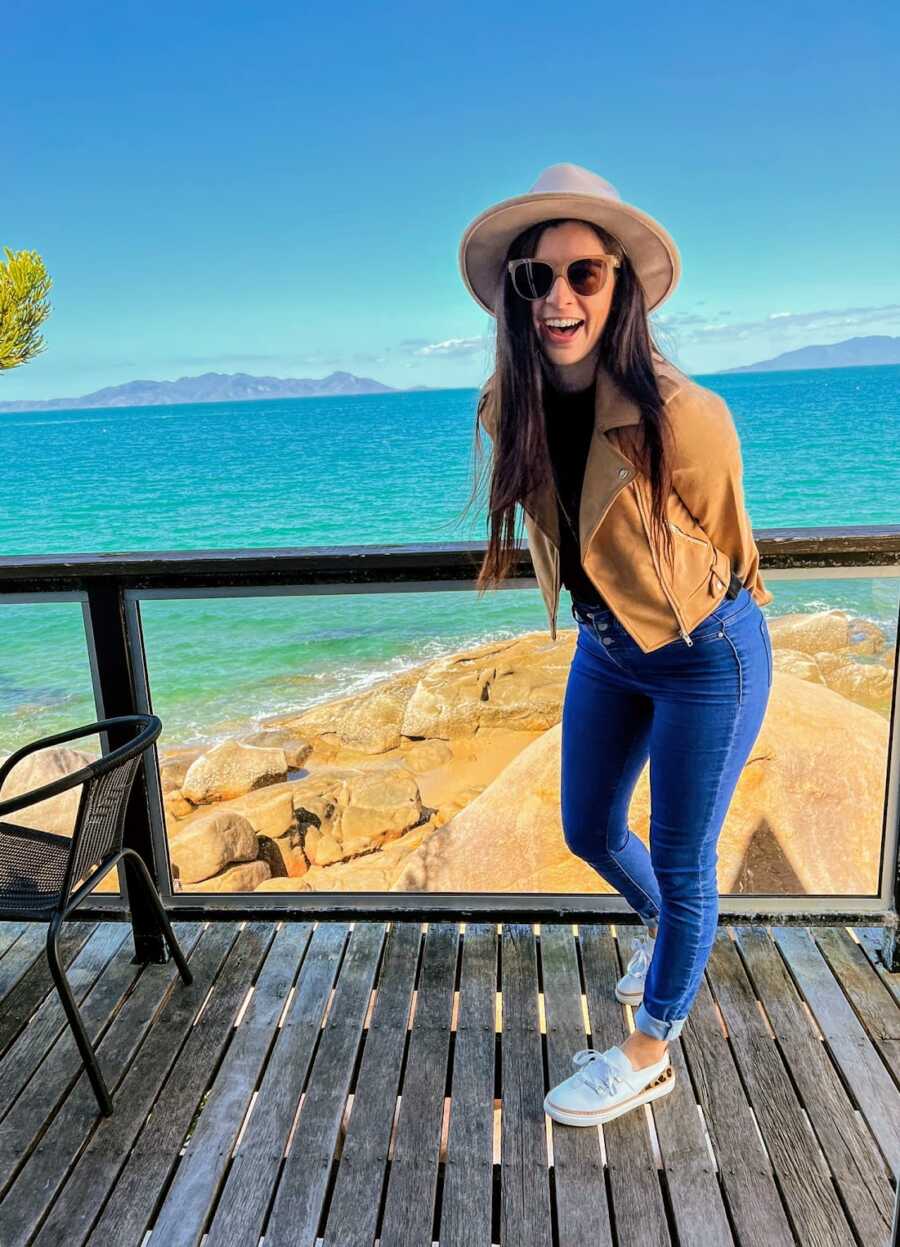
He took me in another room, got an insulin pen, and told me to lift my shirt. He showed me where to put the needle and said, ‘Do 8 units of insulin for the first week and come back and see me next week.’ I sat there in shock, not knowing what was going on. I remember saying to him, ‘How long do I need to do this for?’ To which he replied, ‘Indefinitely.’ He showed zero empathy and was very direct.
He didn’t put me in with a nurse, nor did he provide further education on anything about the disease. It was Friday afternoon and it was evident he was keen to go home. Mom and I got in the car, and I could see she was trying to hold back tears. Honestly, both of us were in shock and questioning whether he was right with the diagnosis.
Accepting And Adjusting
The 5 minute drive back home was silent, his words were repeating over and over in my head, and I couldn’t hold my tears in. I remember Dad was outside doing some yard work. He approached the car smiling and said, ‘How did it go bub?’ His smile quickly turned when he got close enough to see my face. Mom said, ‘She has Type 1 Diabetes.’ All I remember is him throwing his hat on the floor and sliding down one of the trees with his hands covering his face. My father is a very tough man, and I had never seen him like that, which made everything more real.
My previous boyfriend’s mother had Type 1 Diabetes, and Mom called her straight away to tell her. We had seen her do injections, but we actually had no idea about the condition. I stayed home while Mom rushed into the pharmacy before they shut to pick up ALL the supplies I needed.
Within 2 hours, my boyfriend’s mother was at our house and gave me a massive hug and started crying with me. She said, ‘Everything is going to be okay.’ She was so angry the doctor didn’t put me in with a nurse or send me up to the hospital to show me the basics of how to deal with the next week! Looking back now, it was so incredibly wrong, but Mom and I knew no different because we had no idea what was going on.
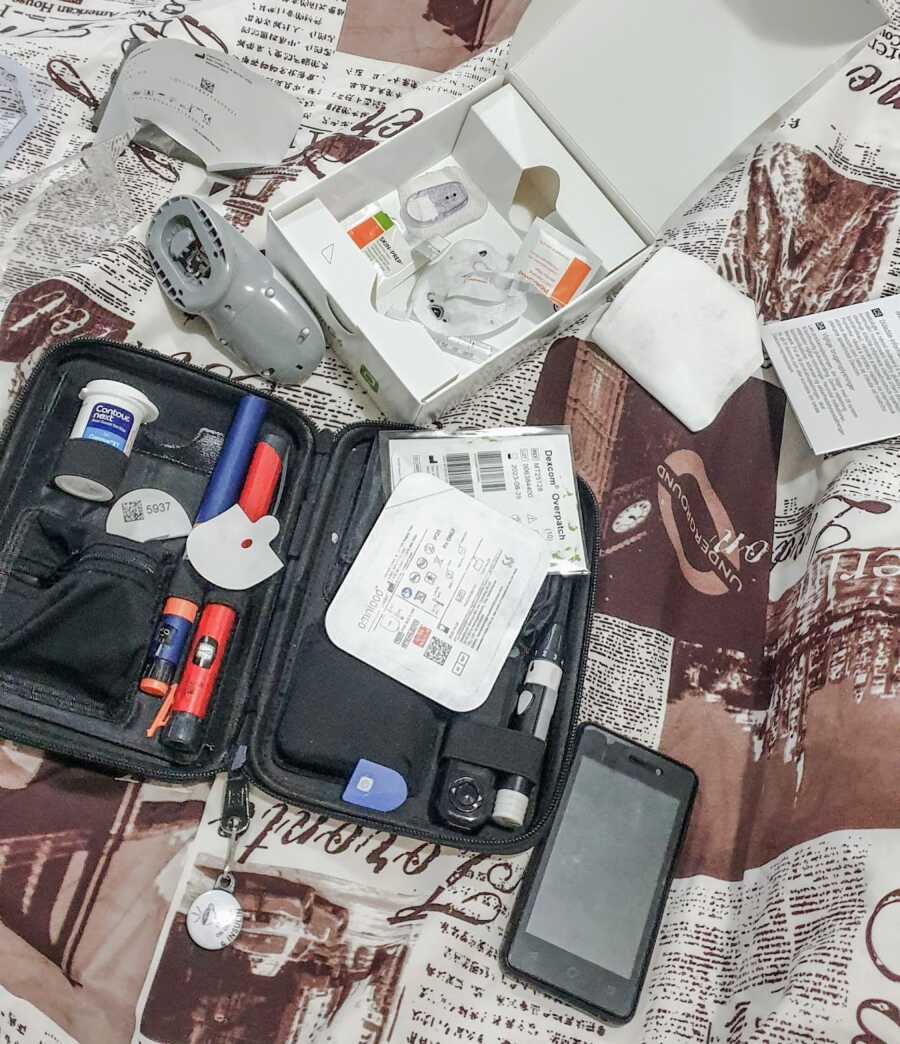
I hated needles. Every time I had a blood test I’d pass out, and to be diagnosed with a condition that involved numerous needles EVERY SINGLE DAY was terrifying. That night I had to do my injection and I was a mess. My dad and sister went into another room and covered their ears because they were so upset hearing me that distressed. I couldn’t do it, and so his mom did it for me. She had her arms around me and said, ‘This is the only one I will do, you have to do it from here.’
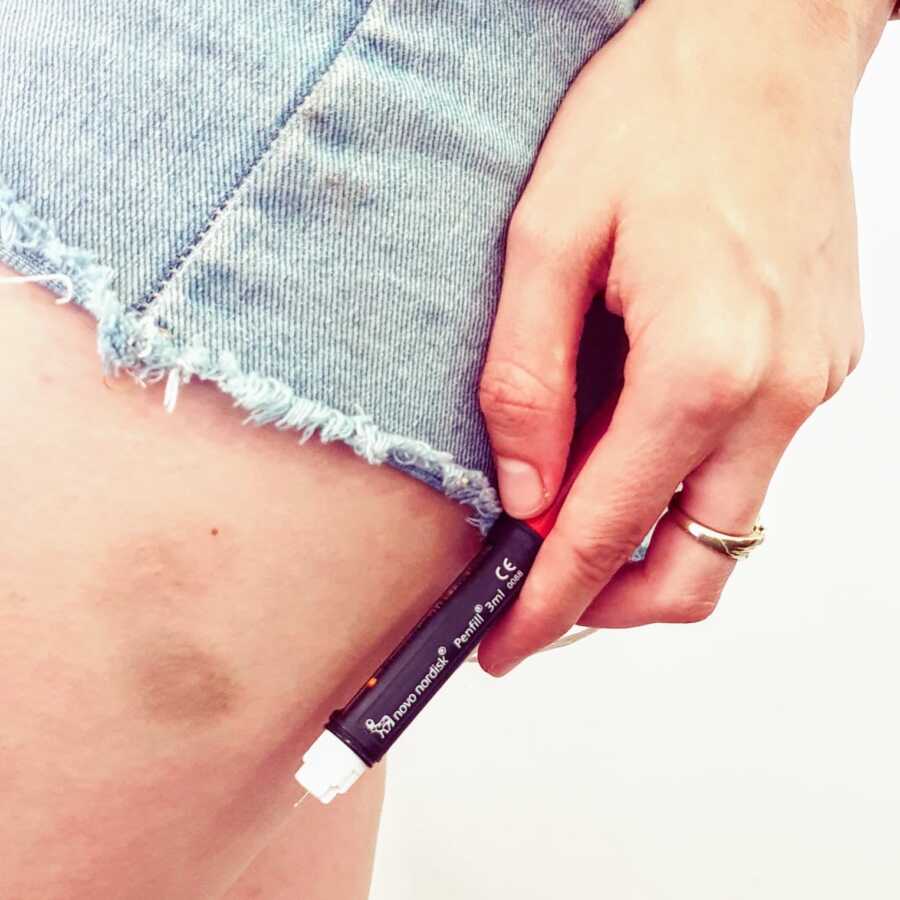
After the injection, I went to the bathroom, locked the door, sat on the floor, and just hysterically cried, which turned into a panic attack. Mom was trying to get in, and I remember saying, ‘I don’t want this!’ I could hear Mom’s voice breaking on the other side as she said, ‘I’m so sorry darling, if I could take this away from you and have it myself, I would.’
That first week I could feel myself getting depressed, my appetite was gone, my bubbly personality wasn’t there, and I felt like nothing. Headaches were happening every day and I honestly felt the life I had was now over. Mom knew a school friend who was a diabetes educator, and contacted her that week. Thankfully, she was able to get me into the hospital’s endocrinology clinic.
It was two exhausting days for my whole family, as they had to attend with me to know how to help manage my new condition. The clinic took my license off me for a month, because they said I was ‘unstable’ due to my levels not being well… stable. At that point, I felt more independence was being stripped from me.
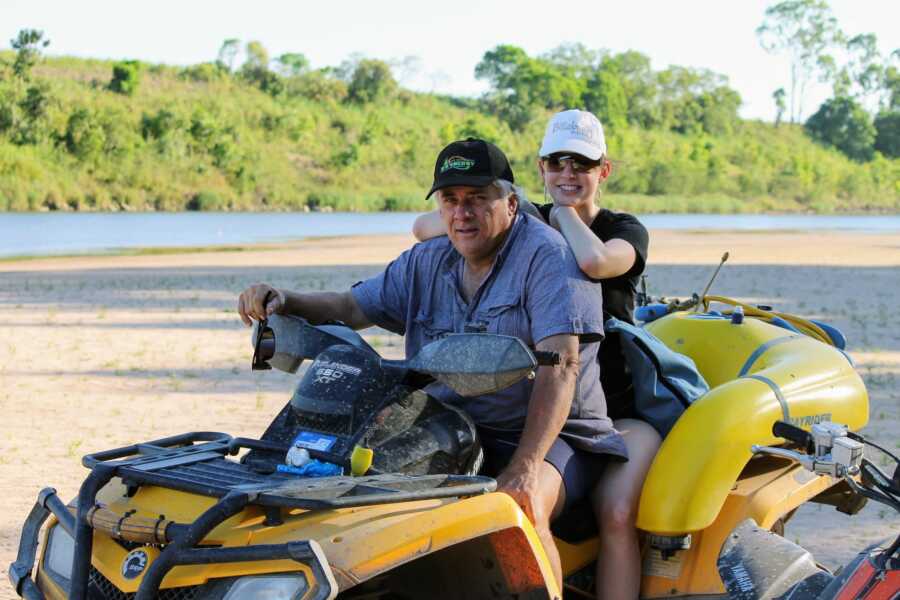
I think many other families in the same position would say the disease affects everyone in the close family. Diabetes certainly caused more stress, especially in the early days. My parents were so scared of me having hypos during the night in those first few weeks that Dad slept in another room, while I slept with Mom.
As a 19-year-old, this definitely wasn’t a normal situation. I’m an early riser, and still to this day, my family will contact me or, if they’re visiting, will walk in my room if it’s past 8 a.m. to make sure I’m essentially alive.
As incredibly tough as the months were, I still continued with my college studies and tried to get life somewhat back on track. Living 18 years one way and having it flipped on its head with an incurable autoimmune disease in the 19th year made me angry at the world.
I had to look at food differently. I had to do 4-5 injections per day. I had to prick my fingers at a minimum of 4 times a day. I had to manually act as a pancreas because mine no longer worked. It made me so sad to think, before the discovery of insulin 100 years ago, the disease I just got was a death sentence.
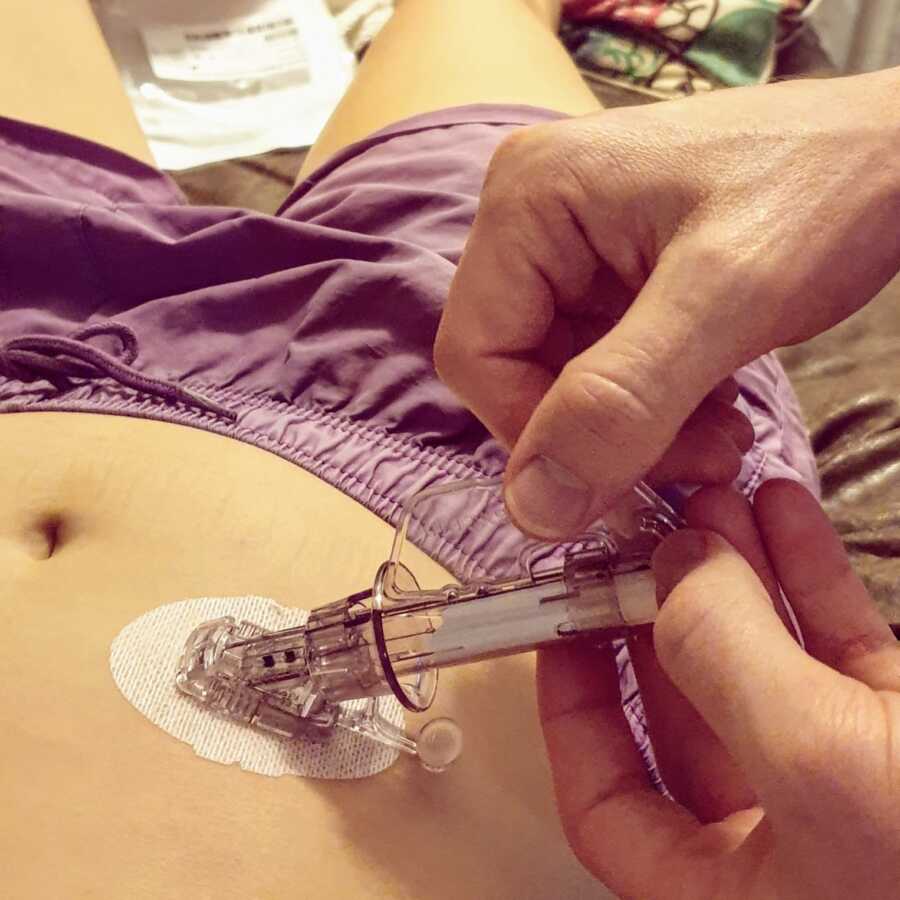
Living With Type 1 Diabetes
T1D is relentless; it’s like having a second job that requires a 24/7 customer care service (me). I don’t get a break from the condition, and I’m required to keep up with life at the pace that everyone else does, which I do. I was always adamant I was going to continue living a full life, but there are moments and days where nothing goes right and it’s exhausting.
Upon my diagnosis, and still now, people tell me, ‘You don’t look sick.’ I hate that comment. I don’t like people defining me by my condition/illness. And yes, physically I don’t appear ‘sick,’ but internally diabetes has a great amount of mental and internal stress on my body and mind.
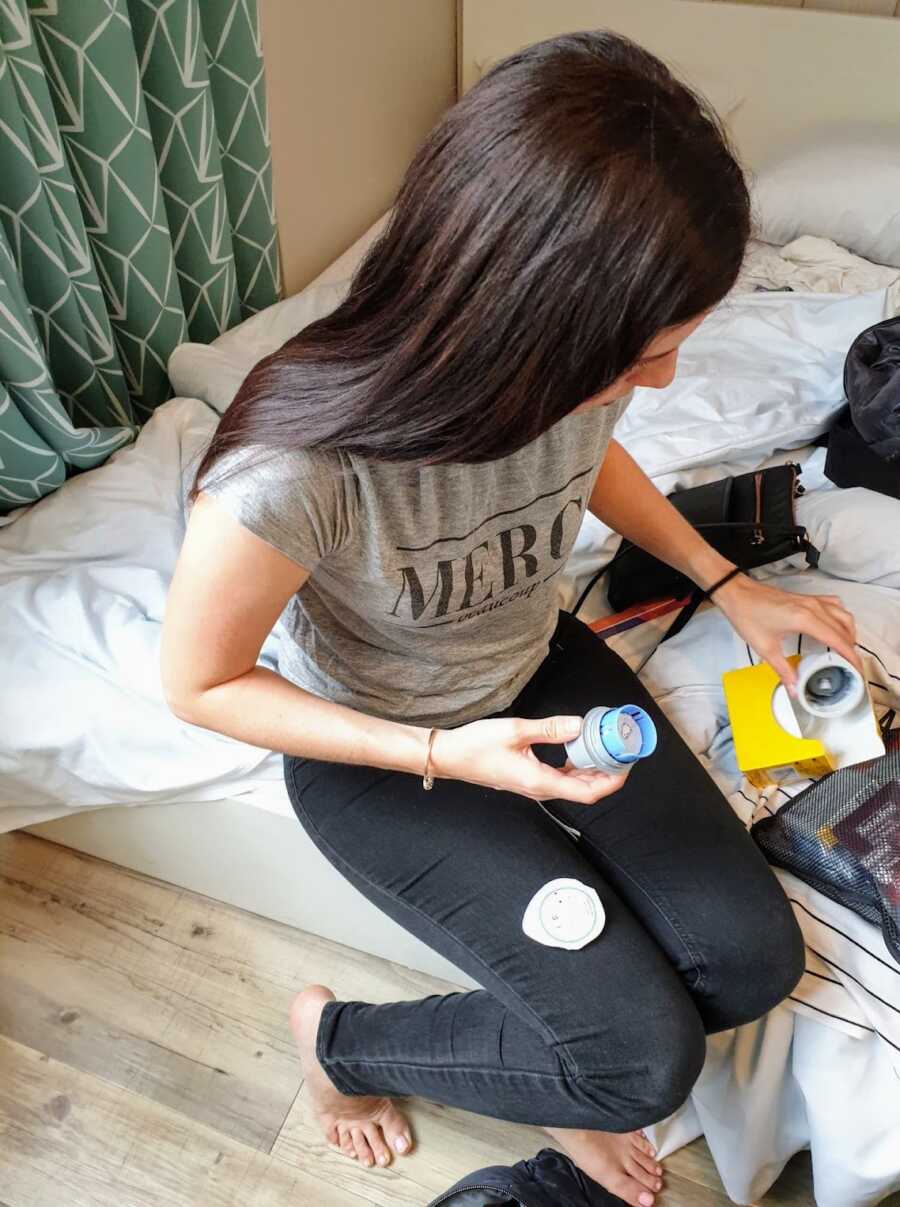
My health is determined by numbers and lines. Health professionals advised that ‘optimal levels’ should be between 4.4 – 7.2 mmol (80 to 130 mg/dL), but I can tell you now, it’s like herding cats because of all the factors that influence my levels on a daily basis – there are 42 factors to be exact! On a weekly basis, I experience hypos and hypers.
Hypoglycemia (dangerously low BGLs) is the one that scares me most. It feels like I’m about to pass out, my conversations don’t make sense, my hands shake, I sweat, and I become agitated. In that situation, I’m trying to scarf down jelly beans to get it back up. If a hypo hits me at night, I’m exhausted the next day, but still have to go to work.
Hyperglycemia, on the other hand, is when my levels go too high, and again, that impacts my body’s function. No one is better than the other, and complications as a result of diabetes can arise. I won’t go into detail of the complications, but there’s a long list and it’s the long term fear that I have for myself. There’s no win, win situation with diabetes.
I’ve had T1D for 10 years this year, and I can honestly say that without my supportive family, partner, and the advancements in diabetes technology, life would be challenging. My parents have paid thousands of dollars over the years for my medical devices because they hadn’t been subsidized. I’ve been wearing a Constant Glucose Monitoring System (CGMS) for 5 years now, and these cost $5,000 each year (only in July this year did the Australian Government subsidize them for everyone!). I can tell you, I cried when this moment happened, as a massive financial burden finally eased off.
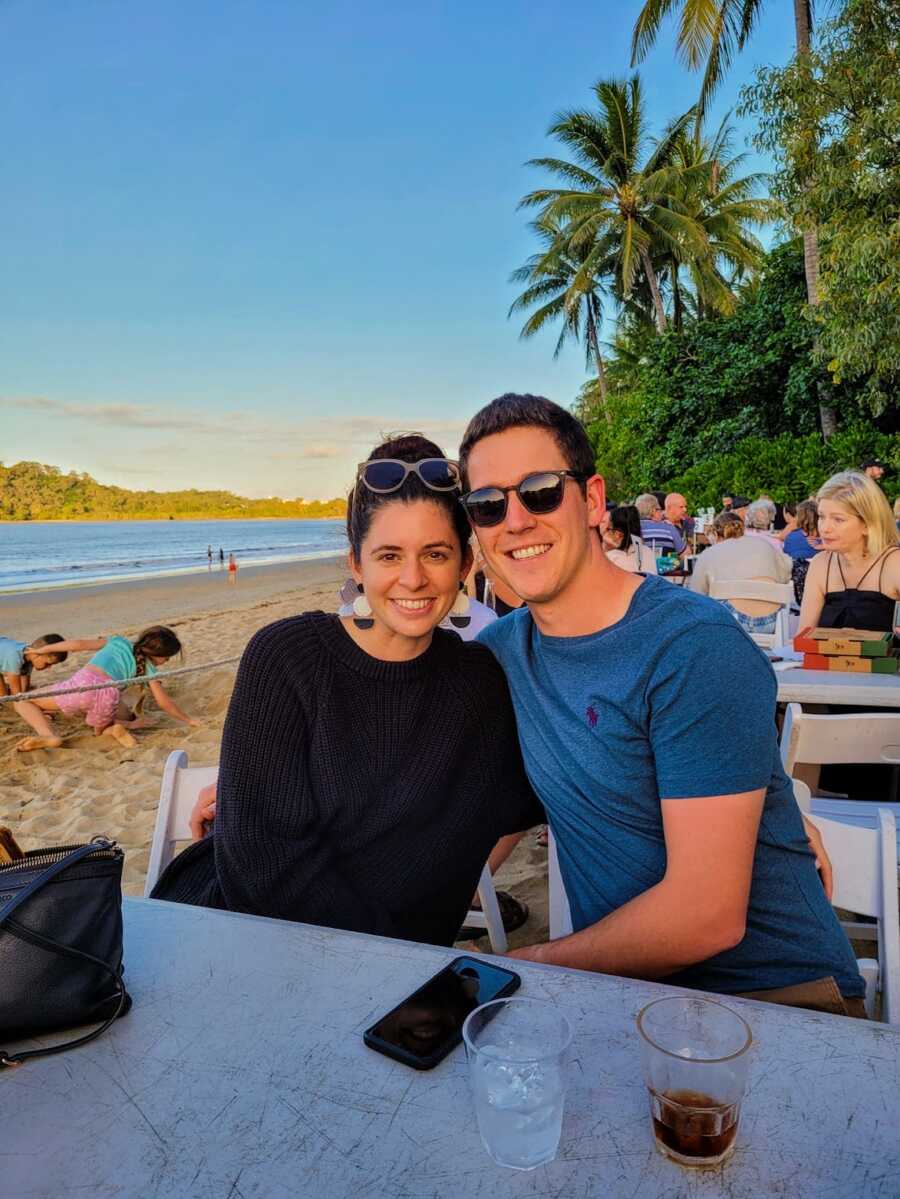
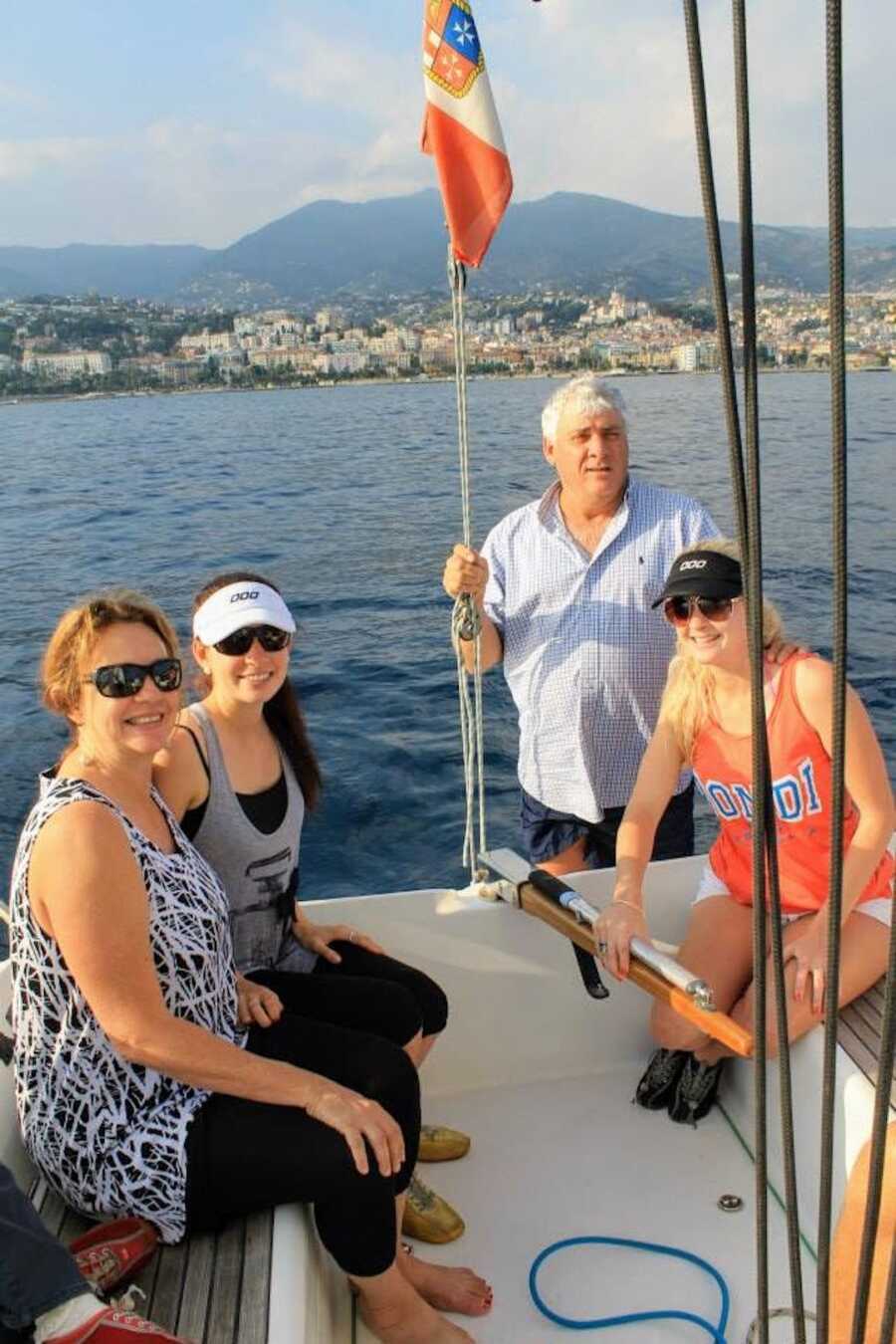
I did injections for 9 years (that’s around 16,500 needles), and this year I decided to go on my first insulin pump, the Omnipod Dash (which is currently $400 per month here). These two foreign devices on my body require constant input and changing, but they reduce hypo anxiety and keep my levels better controlled.
It’s not uncommon I wake up during the night to an alarm alerting me my BGL’s have gone low. Hypo-unawareness is a terrifying thing and what these devices do is literally lifesaving.
Diabetes Support Community
I joined the online diabetes community on Instagram in 2017, when I first started using a CGMS, and at that point I struggled with wearing a foreign device on my body. My self-confidence as a 19-year-old girl surrounded by normal and acceptable beauty standards definitely took a hit.
Still to this day, I struggle with the scar tissue build up from the needles over the years, and now the cannulas. It was this initial lack of confidence, and love for graphic design, that had me start creating one-line artwork for the diabetes community.
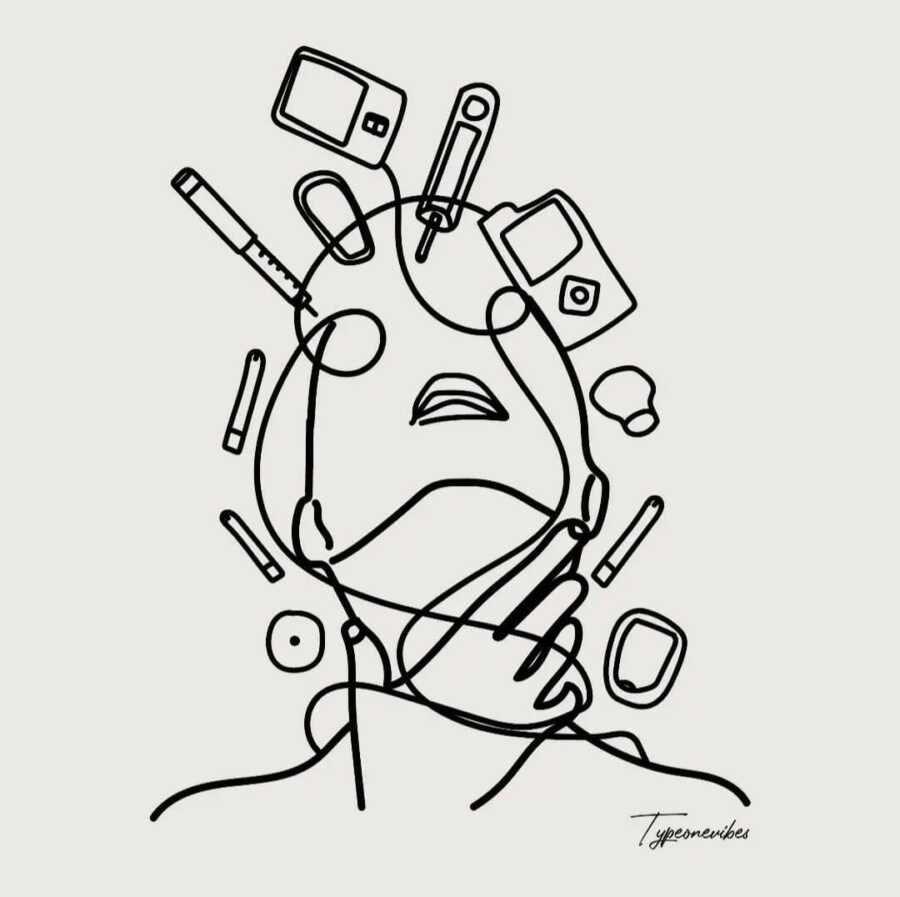
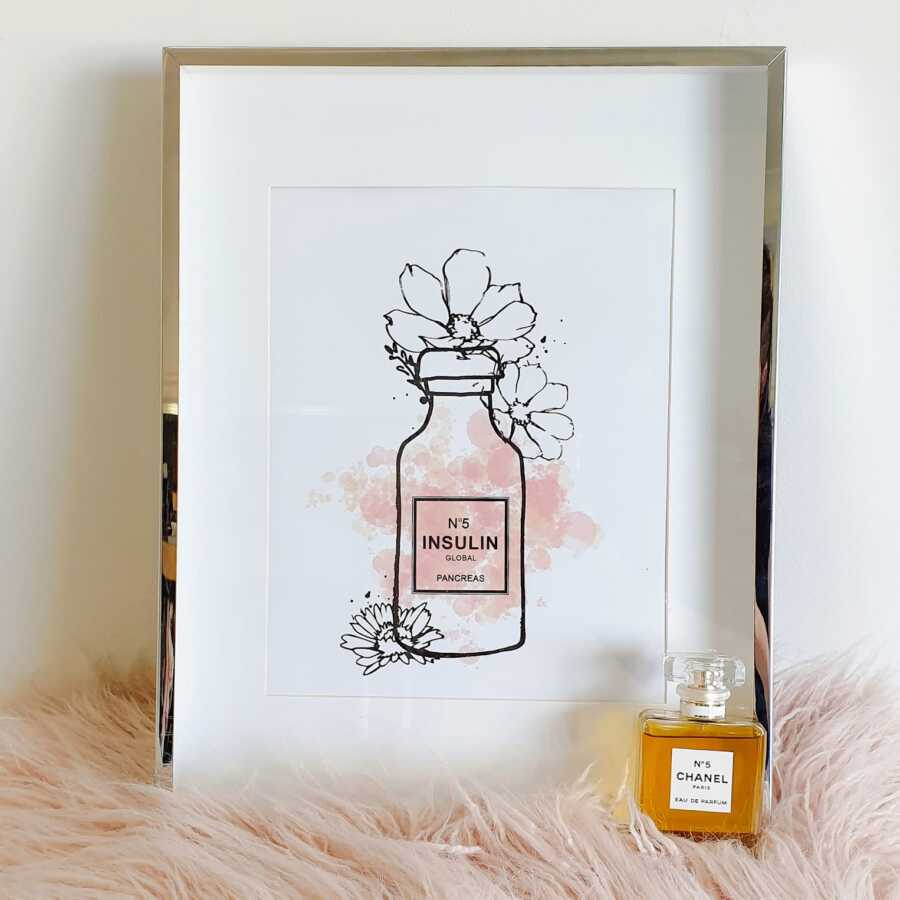
Diabetes is portrayed as such a negative, self-inflicted disease in society, and this perception couldn’t be more wrong. I wanted to create artwork for those actually living with the condition. I wanted them to feel proud, beautiful, resilient, and confident.
Today, I receive daily messages from others living with T1D thanking me for my art because of how it’s helped them in their life, and honestly, it has become one of my biggest joys. The community has helped me just as much as I’ve helped them. Diabetes is so invisible to the naked eye, and my art has made it become more visible; like music, art is a universal language.
Finding the words to summarize a life with T1D is difficult, as there are so many elements involved. It’s so tough and frustrating when no one knows what you’re going through on a daily basis. I felt so heard in a recent JDRF summit by a professor who said, ‘Type 1 Diabetes would be one of the most difficult autoimmune conditions I’ve come across because of the constant need to human interaction – you don’t just prescribe a tablet.’ I wish more people could realize this, and be able to distinguish the difference between Type 1 and Type 2 diabetes (as there’s a huge difference!)
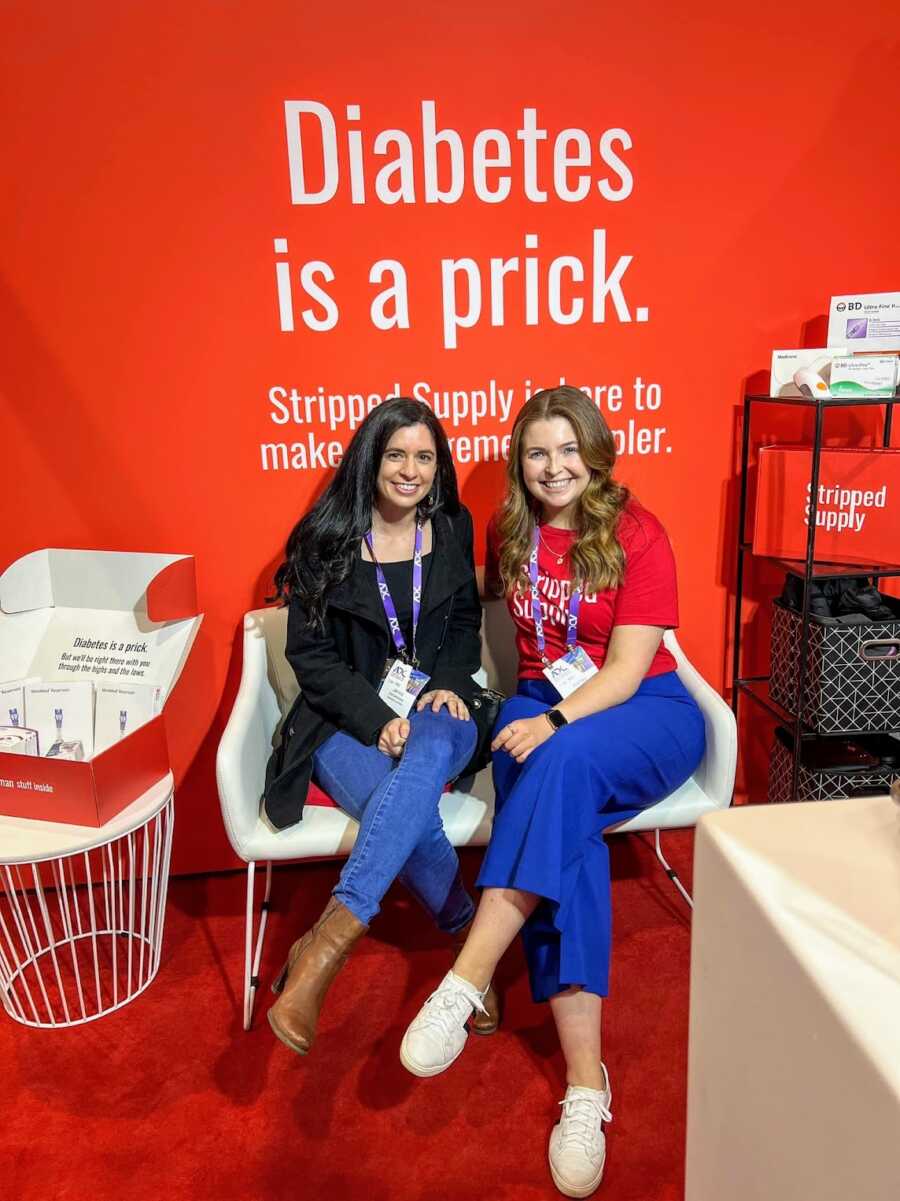
I have been told by doctors that by having one autoimmune condition, I’m more likely to develop more. And I did. Four years into my diagnosis, I was diagnosed with alopecia areata. I had a 6 cm round bald patch at the front of my hairline. My self-confidence took another massive hit (but that story is for another day).
I always say to people that if you have a clean bill of health, you’ve already won the lotto. On my bad days, I have to be patient with myself, and know tomorrow is a new day to start over. Diabetes has been bittersweet. It has given me some of the best experiences of my life; it has become ‘my normal’ and I’ve lived a great life with it.
I do pray that one day a cure will be found for us, but until then, I’ll keep doing my best to live a full life, and continue advocating awareness for this incredibility tough, and complex condition.
Know the signs and symptoms of T1D – The 4 T’s – Thirsty, Tired, Toilet, and Thinner.”
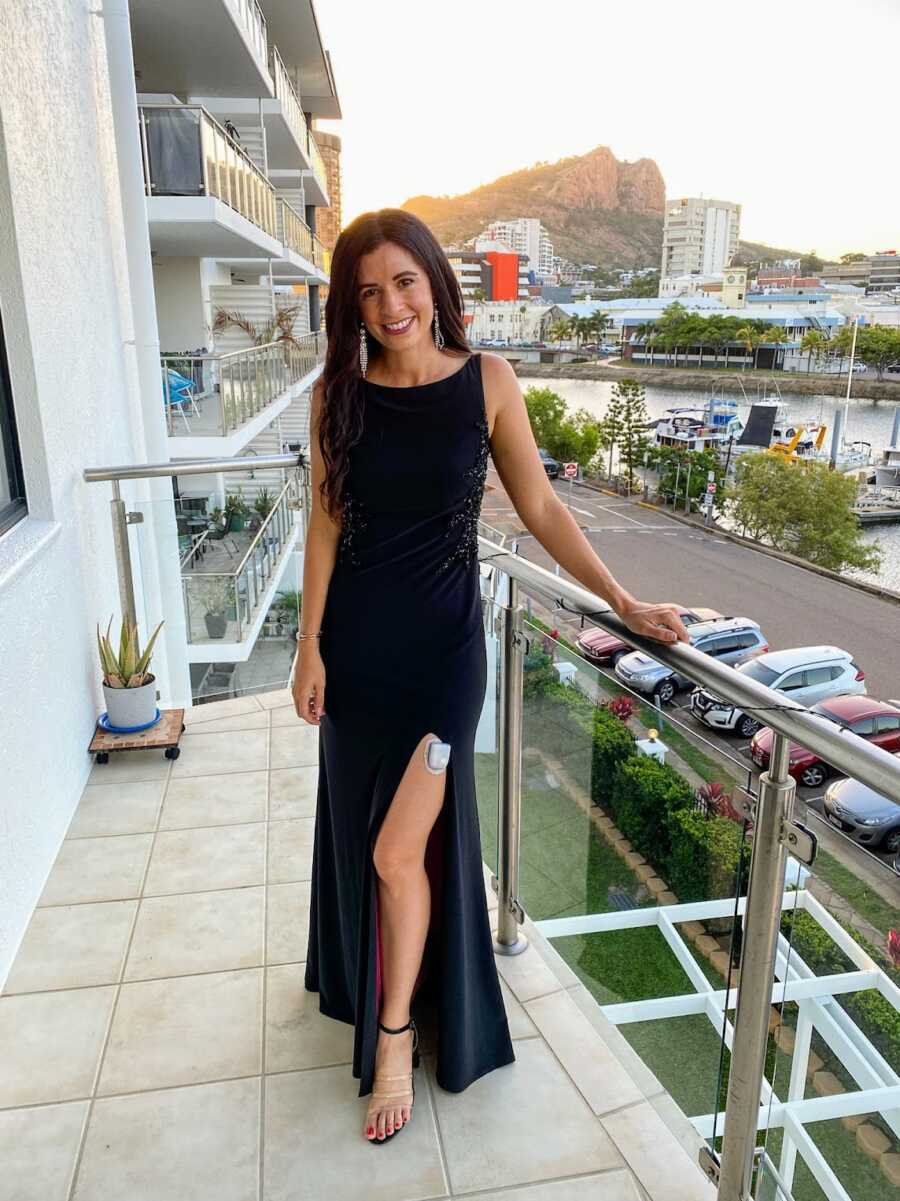
This story was submitted to Love What Matters by Jenna Cantamessa of Far North Queensland, Australia. You can follow her journey on Instagram. Submit your own story here, and be sure to subscribe to our free email newsletter for our best stories, and YouTube for our best videos.
Read more stories like this:
Do you have a loved one with diabetes? Please SHARE on Facebook to make them aware there is a community of support available.

